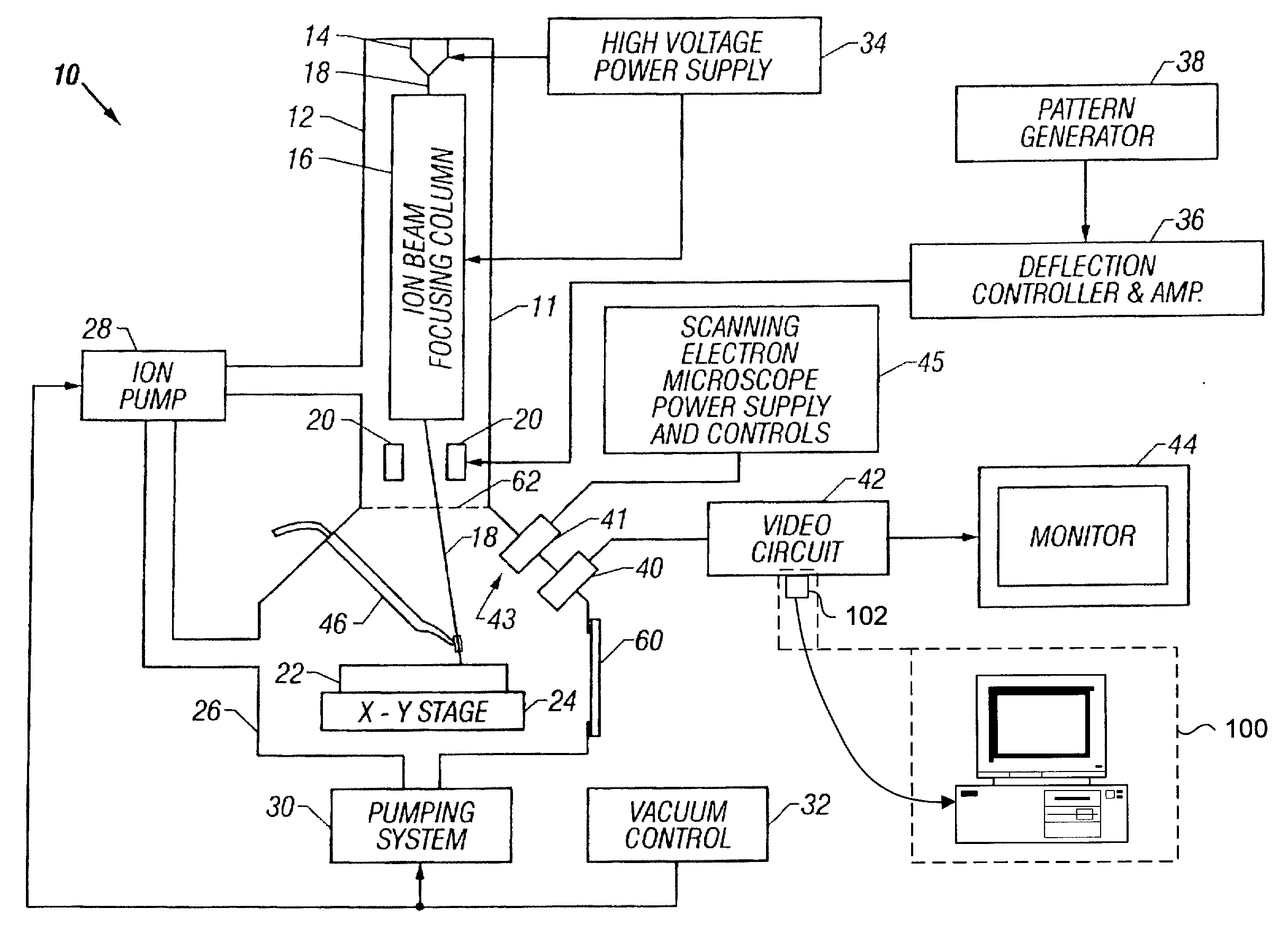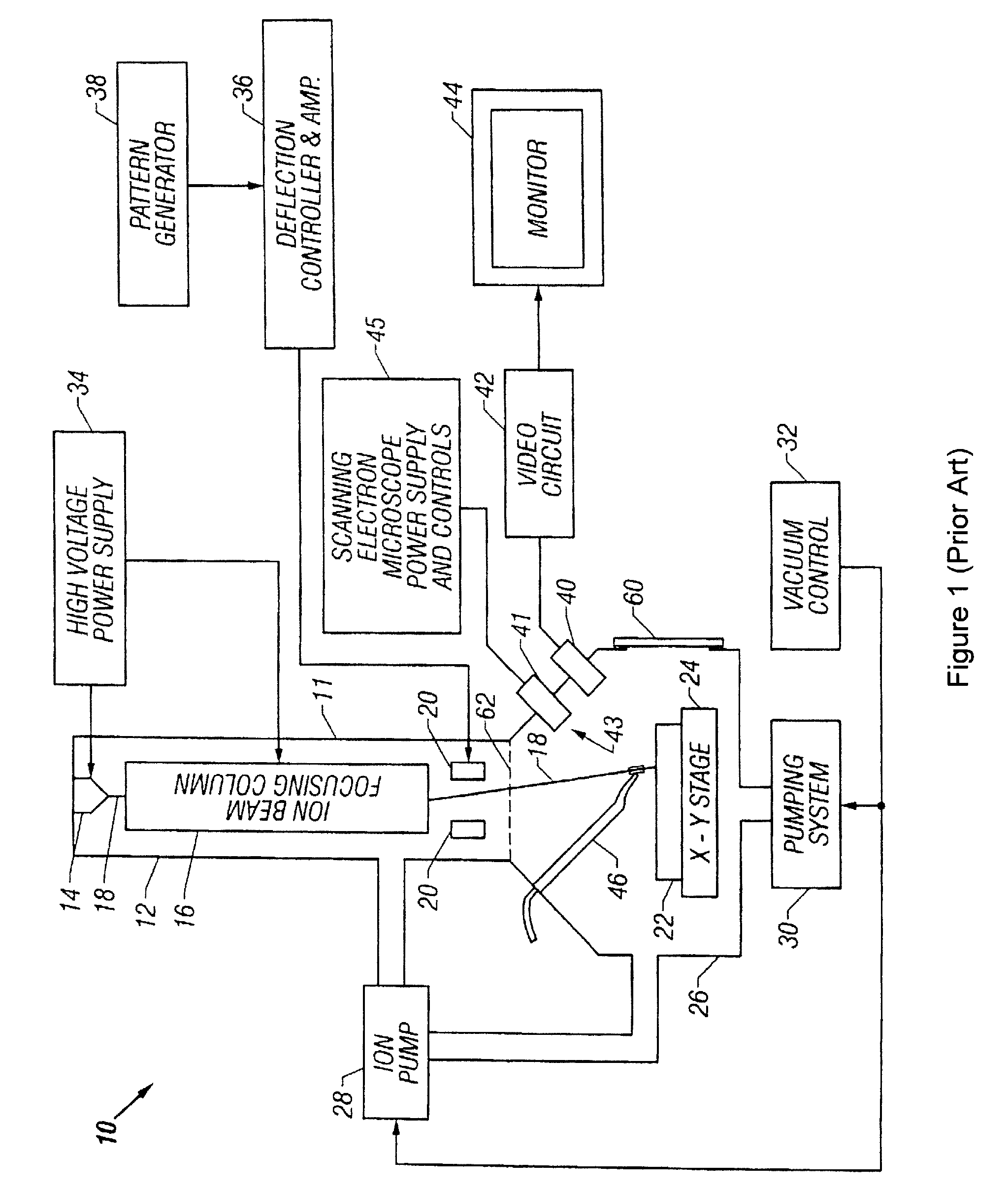System and Method for Focused Ion Beam Data Analysis
a focused ion beam and data analysis technology, applied in the field of charged particle beam systems, can solve the problems of erroneous analysis of modified devices, older fib systems operating on current state-of-the-art semiconductor devices do not provide image and graphical information with a sensitivity that is usable by operators, and real-time image may not provide any value for fib operators for endpoint detection, etc., to achieve the effect of improving the sensitivity to changes
- Summary
- Abstract
- Description
- Claims
- Application Information
AI Technical Summary
Benefits of technology
Problems solved by technology
Method used
Image
Examples
Embodiment Construction
[0050]Generally, the present invention provides methods for improving FIB milling endpointing operations. The methods involve generating real-time images of the area being milled and real-time graphical plots of pixel intensities with an increased sensitivity over native FIB system generated images and plots. The images and plots are generated with raw signal data obtained from the native FIB system. More specifically, the raw signal data is processed according to specific algorithms for generating images and corresponding intensity graphs which can be reliably used for accurate endpointing. In particular, the displayed images will display more visual information regarding changes in milled material, while the intensity graphs will plot pixel intensity data on a dynamically adjusting scale to dramatically highlight relative changes in milled material, as well as interpreting all dwell point data produced by the system rather than a subset, as in the current state of the art systems....
PUM
 Login to View More
Login to View More Abstract
Description
Claims
Application Information
 Login to View More
Login to View More - R&D
- Intellectual Property
- Life Sciences
- Materials
- Tech Scout
- Unparalleled Data Quality
- Higher Quality Content
- 60% Fewer Hallucinations
Browse by: Latest US Patents, China's latest patents, Technical Efficacy Thesaurus, Application Domain, Technology Topic, Popular Technical Reports.
© 2025 PatSnap. All rights reserved.Legal|Privacy policy|Modern Slavery Act Transparency Statement|Sitemap|About US| Contact US: help@patsnap.com



